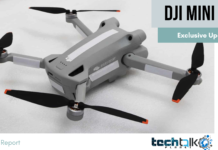Researchers in the field of robotics are constantly looking for the quickest, strongest, most efficient, and least expensive ways to power up, or enable, robots to make the movements required to carry out their intended functions.
The desire of new and better actuation technologies and “soft” robotics is frequently based on biomimetics principles, in which machine components are designed to mimic—and, ideally, outperform—the movement of human muscles.  Despite their high performance, actuators such as electric motors and hydraulic pistons are limited in how they can be used. Actuators should evolve as robots take on more biological forms and people demand more biomimetic prostheses.
Despite their high performance, actuators such as electric motors and hydraulic pistons are limited in how they can be used. Actuators should evolve as robots take on more biological forms and people demand more biomimetic prostheses.
Northern Arizona University’s Department of Mechanical Engineering’s Michael Shafer and Heidi Feigenbaum, along with graduate student researcher Diego Higueras-Ruiz, published a paper in Science Robotics presenting a new, high-performance artificial muscle technology developed in NAU’s Dynamic Active Systems Laboratory. The paper, titled “Cavatappi artificial muscles from drawing, twisting, and coiling polymer tubes,” describes how the new technology not only enables more human-like motion due to its flexibility and adaptability, but also outperforms human skeletal muscle in several metrics.
“We call these new linear actuators Cavatappi artificial muscles because they look like Italian pasta,” Shafer explained.
The actuators can generate more power due to their coiled, or helical, structure, making them an ideal technology for bioengineering and robotics applications. The team’s initial work demonstrated that cavatappi artificial muscles have specific work and power metrics that are ten and five times higher than human skeletal muscles, respectively, and they expect to produce even higher levels of performance as development continues.
“The cavatappi artificial muscles are based on twisted polymer actuators (TPAs), which were revolutionary when they were first introduced because they were powerful, lightweight, and cheap. However, because they had to be heated and cooled, they were inefficient and slow to operate. Furthermore, their efficiency is only about 2%,” Shafer said. “We get around this with the cavatappi by using pressurised fluid to actuate, so we believe these devices are far more likely to be adopted.” These devices react as quickly as we can pump the fluid. Their efficiency is a significant advantage. We have achieved contractile efficiency of up to 45 percent, which is a very high figure in the field of soft actuation.”

This technology, according to the engineers, could be used in soft robotics applications, conventional robotic actuators such as walking robots, or potentially in assistive technologies such as exoskeletons or prostheses.
“We expect that future work will include the use of cavatappi artificial muscles in a wide range of applications due to their simplicity, low cost, lightweight, flexibility, efficiency, and strain energy recovery properties, among other advantages,” Shafer said.
Technology is available for licensing, partnering opportunities
The inventors have taken steps to protect their intellectual property in collaboration with the NAU Innovations team. The technology has reached the stage of protection and early commercialization, and it is now available for licencing and partnering. Contact NAU Innovations for more information.
Shafer began working at NAU in 2013. His other research interests include energy harvesting, wildlife telemetry, and unmanned aerial systems. Feigenbaum began working at NAU in 2007, and her other research interests include metal ratcheting and smart materials. Higueras-Ruiz graduated from NAU in 2018 with a master’s degree in mechanical engineering and will begin his Ph.D. in bioengineering in the fall. This research was made possible by a grant from NAU’s Research and Development Preliminary Studies programme.
























































